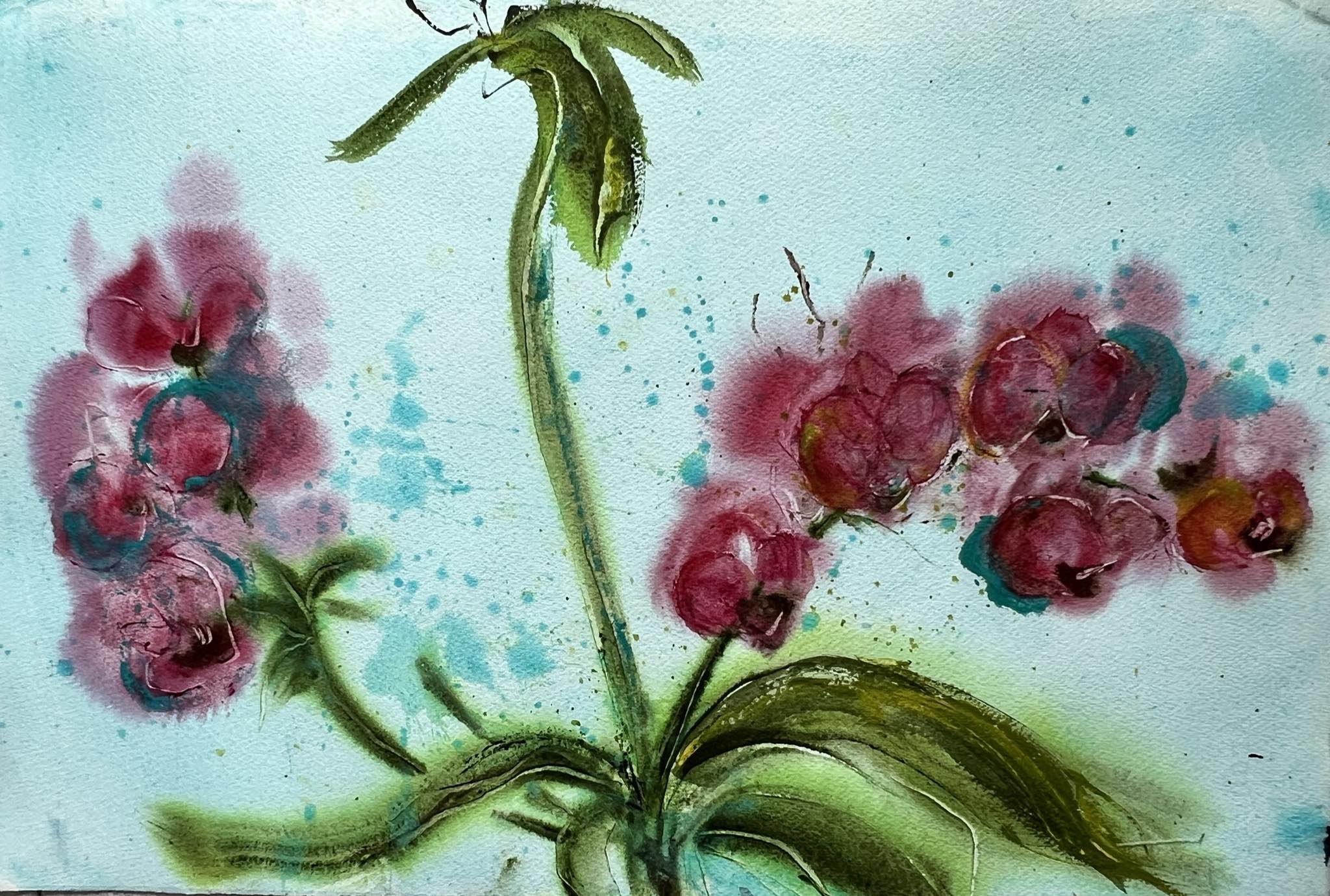- Quinacridone is an organic compound that was first discovered in 1896
- A fusion of quinoline and acridone gave the pigment its name and its chemical formula is scientifically illustrated with 5 (quin) rings
- In 1955, quinacridone was developed as an industrial pigment and then DuPont began marketing it to the automotive industry in 1958
- Most quinacridone pigments are pink or red, but their full range runs between orange and purple – the size and structure of pigment particles dictate the hue
- Quinacridone offers intense, vibrant color that’s staining, yet still beautifully transparent
- DANIEL SMITH was first to use quinacridone pigments for watercolor in 1993 and now we offer 14 colors
- Click here to see all of our quinacridone Color Stories
Watch our full one-hour demo on YouTube to see John and participating artists swatch the quinacridones.
Learn more about these fun facts about quinacridones in this video clip.


In this video clip, Angela Barbi shares some of her paintings in which she used quinacridone colors.
Caroline asks Giovanni to show off some of her favorite color mixes with quinacridones in this video clip. They blend Indanthrone Blue, Cobalt Teal Blue, Neutral Tint and Carbazole Violet each with Quinacridone Gold to get lovely different shades of green and brown. Then they look at Carbazole Violet with Quinacridone Rose, and finally Lunar Black with Quinacridone Coral.
••••••••••
Join us on Zoom or Facebook every Thursday for Live with John Cogley to learn something new and chat with artists around the world.






